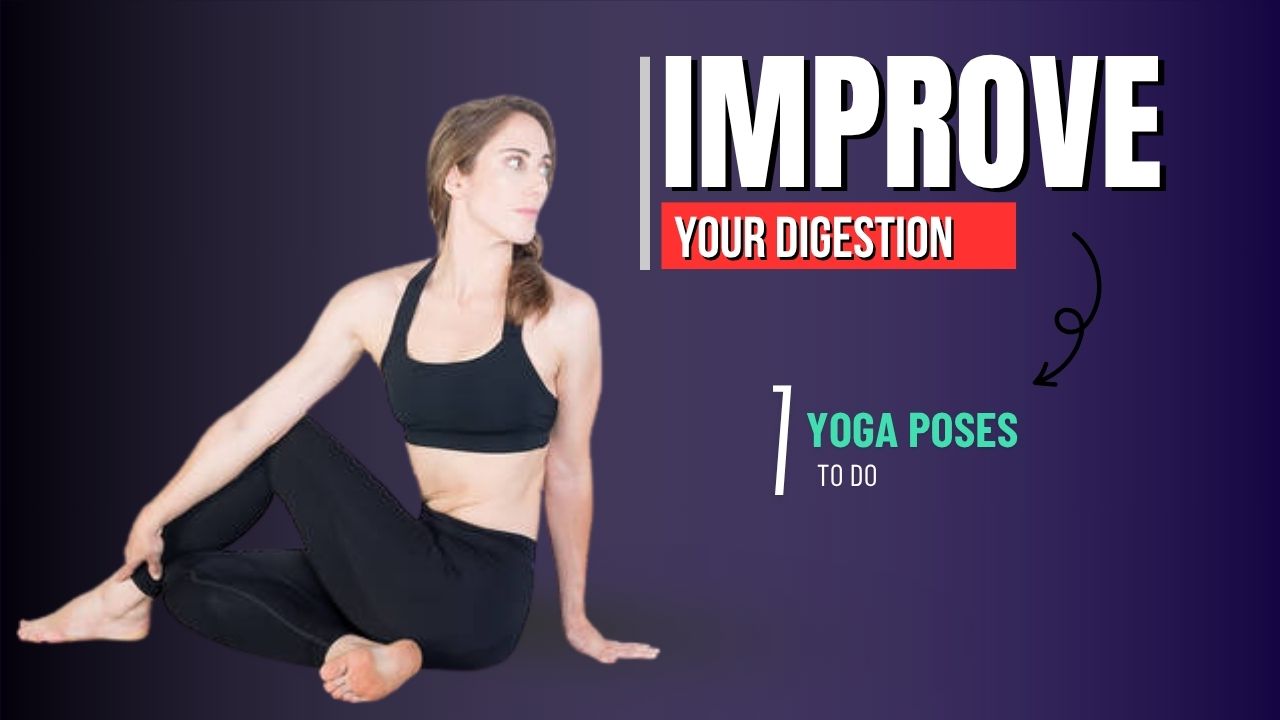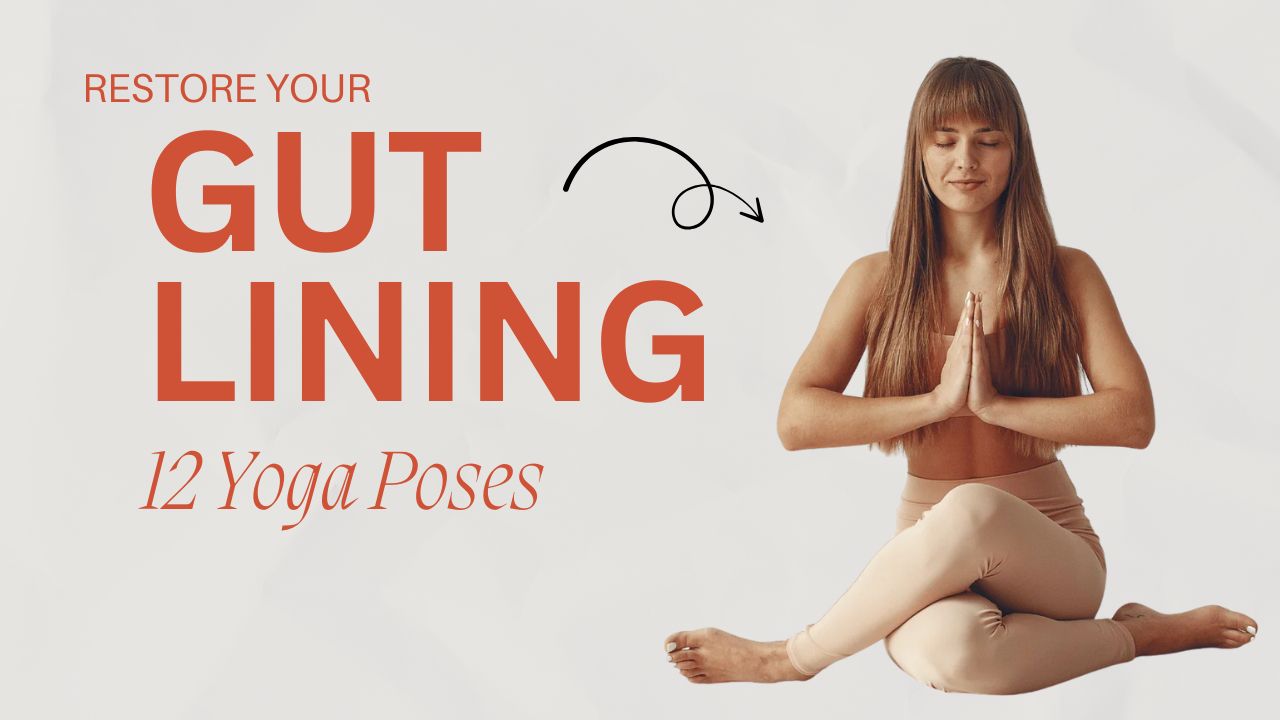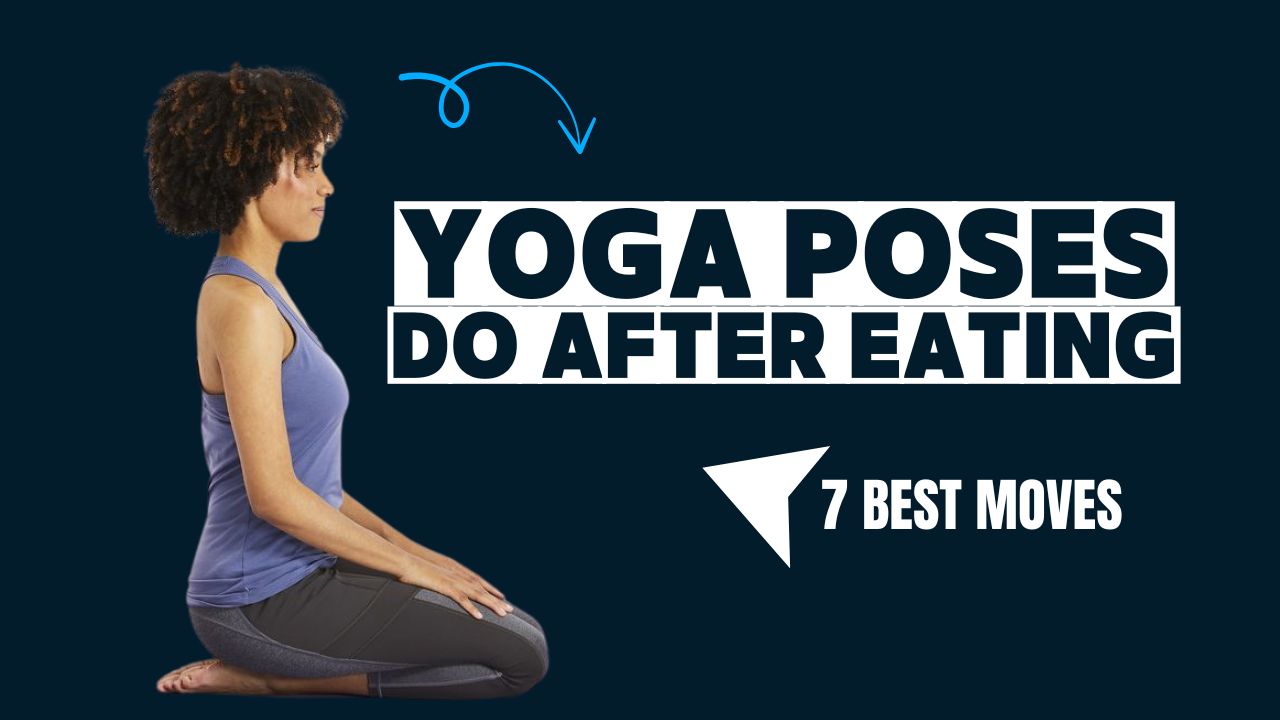Do you know your gut and your core muscles share more than just space in your abdomen?
They’re deeply connected—and when your core is strong and engaged, it can directly benefit your digestive system. Poor digestion is not just about food choices.
Sluggish bowel movement, bloating, and discomfort can stem from weak abdominal muscles and lack of physical activity. The good news? You don’t need an extreme workout to get things moving.
Certain yoga poses and gentle core-activating exercises can stimulate your digestive organs, improve circulation, and promote gut motility—all while strengthening your midsection.
Below are 8 carefully selected poses that not only activate your core but also support healthy digestion. Whether you’re dealing with occasional bloating or looking to boost your gut health long-term, these movements can make a real difference.

Table of Contents
What Can Happen After 30 Days of These Core-Activating Poses
| Positive Changes | Description |
|---|---|
| Improved Digestion | Enhanced bowel movement, reduced bloating, and better gut motility. |
| Stronger Core Muscles | Noticeable strength and tone in abdominal and lower back muscles. |
| Reduced Belly Bloat | Less water retention and gas accumulation leading to a flatter appearance. |
| Better Posture | Core engagement supports upright posture, relieving pressure from the gut. |
| Decreased Constipation | Regular stimulation of the digestive organs encourages healthy elimination. |
| Lowered Stress Levels | Breathing techniques and gentle movement reduce cortisol, aiding digestion. |
| Increased Body Awareness | Greater connection between breath, movement, and internal sensations. |
| Enhanced Flexibility and Mobility | Improved range of motion, especially in hips, spine, and lower torso. |
| More Consistent Energy Levels | Better digestion leads to steadier blood sugar and reduced fatigue. |
| Greater Comfort After Meals | Reduced chances of cramping, heaviness, or indigestion post-eating. |
Do & Don’t: Core-Activating Poses for Digestive Health
| Do | Don’t |
|---|---|
| Practice the poses on an empty stomach or 2–3 hours after eating. | Don’t perform intense core poses immediately after a meal. |
| Focus on deep, controlled breathing during each pose. | Don’t rush through the poses or hold your breath. |
| Use props (blocks, cushions) if you need extra support. | Don’t force yourself into a pose that causes pain or discomfort. |
| Maintain proper alignment to protect your spine and core. | Don’t compromise form just to hold a pose longer. |
| Stay consistent with your practice—3 to 5 times a week is ideal. | Don’t expect immediate results after just one or two sessions. |
| Modify poses if you have any injuries or medical conditions. | Don’t ignore signs of strain, especially in the lower back or abdomen. |
| Incorporate relaxation poses like Child’s Pose to aid recovery. | Don’t treat these routines like a high-intensity workout. |
| Listen to your body and ease into each posture gently. | Don’t compare your flexibility or strength to others. |
8 Best Poses To Activate Core for Digestive Health
1. Supine Twist (Supta Matsyendrasana)
Why it works:
This pose gently massages the abdominal organs, helping to release trapped gas and support bowel movements.
How to do it:
- Lie on your back with your legs extended.
- Bring your right knee toward your chest and cross it over to the left side of your body.
- Extend your right arm out and look toward the right.
- Keep both shoulders grounded as you breathe deeply.
- Hold for 30–60 seconds and switch sides.
Tip: Focus on long, slow exhalations to enhance the twisting motion’s effect on your gut.
2. Boat Pose (Navasana)
Why it works:
This is a core-intensive posture that builds abdominal strength and stimulates the intestines, aiding digestion.
How to do it:
- Sit on the floor with knees bent and feet flat.
- Lean back slightly and lift your feet off the ground.
- Extend your legs and arms forward, balancing on your sit bones.
- Keep your spine straight and engage your abdominal muscles.
- Hold for 15–30 seconds, rest, and repeat 2–3 times.
Interesting Fact: A strong core also supports spinal alignment, which further reduces abdominal compression—improving digestive efficiency.
3. Seated Forward Fold (Paschimottanasana)
Why it works:
This folding pose compresses the abdomen, helping stimulate the digestive tract and promote internal heat.
How to do it:
- Sit with your legs extended in front of you.
- Inhale and lengthen the spine upward.
- Exhale and fold forward from the hips, reaching for your feet.
- Keep the spine long; avoid rounding your back excessively.
- Hold for up to 1 minute while breathing steadily.
Myth Buster: Many people believe forward folds are only for flexibility—but their effect on the gut makes them essential for digestive yoga flows.
4. Cat-Cow Pose (Marjaryasana-Bitilasana)
Why it works:
This dynamic movement stimulates the core and improves circulation to the digestive organs. It also reduces stress—a known trigger for digestive issues.
How to do it:
- Come to all fours with wrists under shoulders and knees under hips.
- Inhale: arch your back, lift your tailbone and head (Cow).
- Exhale: round your spine, tuck your pelvis and chin (Cat).
- Move slowly with your breath for 1–2 minutes.
Tip: Syncing breath with movement enhances the gut-soothing effects of this gentle spinal massage.
5. Wind-Relieving Pose (Pawanmuktasana)
Why it works:
As the name suggests, this pose helps release gas and relieve bloating. It also strengthens the lower abdominal wall.
How to do it:
- Lie on your back and hug both knees into your chest.
- Tuck your chin slightly and press your lower back into the floor.
- Hold for 30–60 seconds while breathing deeply.
- You can also rock gently side to side for a soothing massage.
Did You Know? Ayurveda recommends this pose for people with sluggish digestion or irregular bowel movements.
6. Plank Pose
Why it works:
Though not a traditional yoga pose for digestion, the plank activates deep core muscles, improving circulation and posture—both essential for proper digestion.
How to do it:
- Start on all fours and step your feet back, forming a straight line from head to heels.
- Engage your core and glutes to keep hips from sagging.
- Hold for 30–60 seconds without collapsing into your shoulders.
Pro Insight: Poor posture can compress the abdomen and affect digestion. A strong plank routine helps undo that compression.
7. Bridge Pose (Setu Bandhasana)
Why it works:
This mild inversion increases blood flow to the abdominal area while engaging your glutes and lower core.
How to do it:
- Lie on your back with knees bent and feet hip-width apart.
- Press into your feet to lift your hips off the floor.
- Interlace your fingers underneath your back and open your chest.
- Engage your glutes and hold for 30–45 seconds.
Bonus Benefit: It also stimulates the thyroid gland, which supports metabolic function.
8. Child’s Pose with Core Engagement
Why it works:
Often used for rest, this version of Child’s Pose incorporates a subtle core engagement to stimulate abdominal circulation while stretching the lower back.
How to do it:
- Kneel with your big toes together and knees wide apart.
- Fold forward and stretch your arms ahead.
- Lightly engage your core by drawing the belly toward the spine.
- Breathe slowly for 1–2 minutes.
Tip: Use this as a calming pose post-meal or at the end of your yoga flow for digestive recovery.
Final Thoughts
Digestive health is a complex interplay of physical movement, diet, stress levels, and lifestyle. While many focus solely on food, targeted physical activity—especially core-focused poses—can dramatically enhance gut function.
These 8 poses activate the abdominal region, massage internal organs, and promote relaxation—all of which support healthy digestion naturally.
Make these poses a part of your daily or weekly routine, especially during times of digestive discomfort. Consistency is key.
With regular practice, you’ll not only notice a difference in how your stomach feels but also how your entire body functions—stronger, calmer, and more energized.
Frequently Asked Questions (FAQs)
Can yoga really help with digestion?
Yes. Yoga poses that activate the core and gently massage the abdominal organs can improve blood flow, reduce bloating, and stimulate digestive function. Many people experience relief from constipation, gas, and indigestion with regular practice.
How often should I do these poses to see digestive benefits?
You can practice these poses 3–5 times per week for noticeable results. Even a short 10–15 minute routine can support better digestion when done consistently.
When is the best time to do these poses—before or after eating?
Ideally, do these poses on an empty stomach or wait at least 2–3 hours after eating. Some gentle poses like Child’s Pose or Supine Twist can be done after meals to relieve discomfort, but avoid intense core work right after eating.
Are these poses safe for beginners?
Yes, most of the poses listed are beginner-friendly and low-impact. However, always listen to your body. If you have pre-existing conditions (like hernia, pregnancy, or spinal issues), consult a healthcare provider or certified yoga instructor before beginning.
Do I need any special equipment to perform these poses?
No special equipment is required. A yoga mat is helpful for comfort and grip, and you may use a pillow or yoga block for added support in some positions.
Can these poses help reduce belly fat along with improving digestion?
While these poses engage the core and may contribute to toning the abdominal area, fat loss depends on overall activity level and nutrition. However, improved digestion can reduce bloating, making your stomach feel and look flatter.
What should I do if I feel discomfort or pain during a pose?
Stop immediately if you feel pain. You may need to adjust your position, use support like cushions or blocks, or choose an alternative pose. Never force a movement, especially in the abdominal area.
Is it okay to do these poses every day?
Yes, gentle yoga poses for digestion can be done daily. However, give your body rest if you feel sore or fatigued, especially from core-intensive poses like Boat or Plank.
How long does it take to see improvement in digestion through yoga?
Some people notice improvements in just a few sessions—especially relief from gas or bloating. Long-term benefits such as improved bowel regularity or reduced digestive discomfort can take a few weeks of consistent practice.
Can I combine these poses with other forms of exercise?
Absolutely. These poses can be a great complement to strength training, cardio, or walking. In fact, combining yoga with other forms of movement may enhance both digestive and overall physical health.










